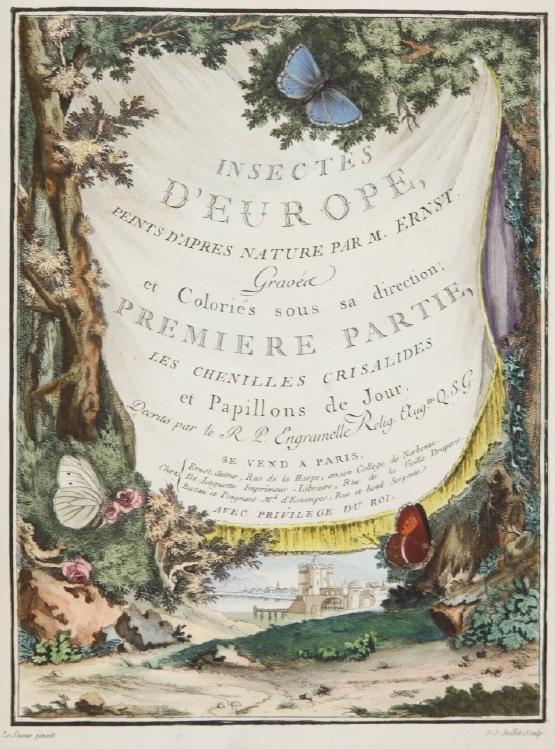The Burnitz collection
The Frankfurt cityscape of the 19th century was shaped by a small group of architects, including Johann Friedrich Christian Hess, Friedrich Hessemer and Friedrich Rumpf, als well as Rudolf Burnitz (1788-1849) and his son Rudolf Heinrich Burnitz (1827-1880). Rudolf Burnitz completed his training in Karlsruhe under Friedrich Weinbrenner and settled in Frankfurt in 1821 after a trip to Italy. Here he created, among other things, the orphanage (1826), the Israelite Hospital (around 1927) and for the Leerse-Bernus family the Burnitz Building in the Saalhof (1840), named after him, which today forms part of the Historical Museum. His son Rudolf Heinrich first apprenticed with him before continuing his education with Heinrich Hübsch in Karlsruhe and at the Berlin Bauakademie. After a long stay in Italy, he designed numerous public and private buildings in his father's city, such as the commercial buildings in Liebfrauenstrasse (Malakoff, 1858), the hall building in Junghofstrasse (1861), the gasworks of the Neue Frankfurter Gasgesellschaft (1861-1863), the Alte Bürgerhospital in the Senckenbergisches Stift (1874, begun by Oskar Pichler), the Neue Börse (1874-1879), the Villa Grunelius on Untermainkai (1877), and several apartment buildings.
The Historical Museum was able to acquire parts of the Burnitz family estate from private ownership. It is an extensive collection of drawings, watercolors, photographs, paintings, busts, and personal documents of the two architects, which significantly expands the museum's existing holdings of Burnitz works. In addition to study sheets from their training period, the design drawings for Frankfurt buildings and a large number of travel sketches with depictions of Italian buildings are particularly noteworthy. In addition, there are photographs presumably acquired during the trip, which served Rudolf Heinrich Burnitz as sources of inspiration for his own work.
The Burnitz collection is currently being successively catalogued and inventoried with a view to a later special exhibition with an accompanying catalog.
New acquisition of butterfly encyclopaedia “Les papillons d’Europe”

The Frankfurt banker Johann Christian Gerning (1745-1802) owned an important collection of butterflies, insects and birds, frequently visited by European entomologists in the 18th century. Among them were the butterflies owned by Maria Sibylla Merian. Gerning therefore also made a significant contribution to the illustrations and descriptions in the entomological (insectological) encyclopedia "Les papillons d'Europe", published in Paris between 1779 and 1792 by Engramelle and Ernst.
This extremely rare work, produced in an edition of only 250, includes eight volumes of plates and text with 252 colored copper plates. Numerous plates were hand-colored in Frankfurt by Maria Eleonora Hochecker after Gerning's butterflies and sent to Paris. The HMF was able to acquire this precious work in 2009 through an antiquarian bookshop in Amsterdam as a permanent loan from the Adolf and Luisa Haeuser Foundation.
Latest from the renovation and move – Climatic crates to ward off Jack Frost in January 2011
Before that, the objects stored in folders must be lifted out of the drawer cabinets, packed with acid-free paper and placed in the containers. In parallel, the empty cabinets are vacuumed and damp cleaned. They will be moved to the new depot along with the filled climate-controlled containers and reassembled at an assigned location. The collection objects are left packd for the time bing and put back into their cabinets. To maintain order within the collection, the packed objects and cabinets must be precisely labeled so that they can be assigned to the correct drawer or their new location after transport. This sounds simple, but is complicated by the fact that the new space requires a change in the placement of the cabinets.
All the work has to be dovetailed by a moving team of paper conservators and art movers to ensure a smooth process. In order to accomplish this task, extensive pre-planning was necessary regarding staffing levels, the type and quantity of packing materials, and the new placement order for the cabinets. It is expected that the Graphic Collection will be available for public use again at its new location in May 2011.
Latest from the renovation and move – August 2010
Preparing large graphic prints for travel
On the one hand, storage in a rolled state saves space and is necessary when the objects reach a certain size. On the other hand, it can lead to damage, e.g. in the area of the painting layer, or make it more difficult to spread out and thus to use, due to the tensions that arise in the paper. This problem has been addressed by choosing new cardboard rolls with larger diameters of up to 20 cm.
Packing materials have also been improved. Due to their relatively high content of acid and wood fibers, gray board and wrapping paper lead to paper decay and conspicuous browning of the originals. Therefore they were replaced by museum-quality carboard rolls whose composition meets conservation requirements and which are thus suitable for long-term storage. A matching cardboard box made of acid-free corrugatd cardboard prevents pressure from its own weight and other objects. It protects against mechanical damage as well as dust accumulation and, due to its alkaline content, captures acidic components from the air before they can cause damage to the original.
Preparations for moving a collection also provide a rare opportunity to examine the material and state of preservation of the objects. Thus, in this sub-collection, special empahsis was placed on dry surface cleaning of the objects, since one part showed a conspicuous gray coating due to air pollution, among other things.
